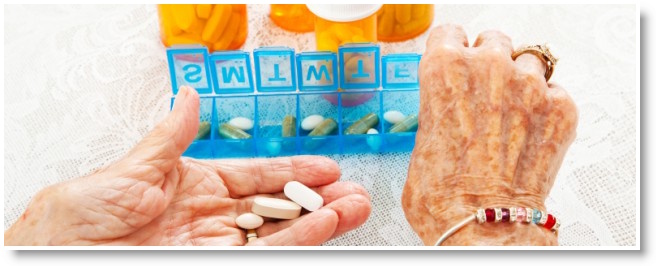Prescription for Therapy
Using your client’s prescriptions for functional speech-language therapy
I’ve used the Assessment of Language Related Functional Activities with my rehab patients who are discharging to home (especially those going home alone), to help determine treatment goals and activities. I’ve found that many do very poorly on the “Medication Management” subtest, which seems pretty critical when advising family members or other caregivers about the level of assistance they’ll need when they are discharged. So I’ve devised activities to help them achieve the highest level of independence they can.
Skills Targeted: Executive functions, functional reading
Goal: Identify compensatory strategies to help them organize their medications, or determine how much supervision they will need for this.
What you’ll need:
-
If possible, a copy of the patient’s current medications. I start with the paperwork as it is actually printed for the patient, and determine the need for modifications from there.
-
Pill sorter, ideally with 3 or 4 receptacles per day (Morning, Lunch, Dinner, Bedtime)
-
An assortment of colored “pills”: small flat buttons work well, or “Smarties” candies. These should be sorted by color and placed in individual pill bottles.
Tasks
-
Screen their visual acuity for the prescriptions as they would receive them printed from the doctor or medical facility; Ask:
-
What is the name of this medication?
-
How many pills are to be taken each day?
-
When should you take the medicine?
-
Should this medicine be taken with food?
-
-
If they cannot pass the screening above, hand-write a large font “plain English” medication list for them, simplified to the medication name and directions such as “Take twice a day with food.” Ask the same screening questions as above.
-
Make a second copy of their prescriptions, separating individual medications, and affix one prescription to each “pill bottle.” Or, if they can’t read the original prescription label, write the medication name larger on a piece of tape affixed to each bottle, and have them match the large-font prescription instructions to the correct bottle.
-
Taking one bottle at a time, have them fill the medication sorter for the week - assist as necessary.
-
Practice, practice, practice!
Free Treatment Materials for SLPs
- Printable Worksheets (Aphasia, Apraxia, Writing, Reading, Auditory Comprehension)
- Clinically proven treatment protocols you can use today.
- Clever cognitive therapy designed for real-world carryover
- And more, delivered free every week.
- We also have a home therapy course specifically for caregivers.
Every day is an opportunity for recovery. Don't miss a single day.
- Surprising neuroscience discovery that makes recovery possible at any age.
- Why embracing failure leads to faster recovery.
- Unlock your survivor's communication needs in 4 steps.
- How to improve speech & language at the kitchen table.
Clay Nichols
Co-founder of
MoreSpeech and
Bungalow Software
for unlimited speech therapy at home and in the clinic.
 For
3 decades, Clay has helped patients, caregivers and speech pathologists
with speech & language software. He is not a speech-language
pathologist.
For
3 decades, Clay has helped patients, caregivers and speech pathologists
with speech & language software. He is not a speech-language
pathologist.
© 2025 Bungalow Software
